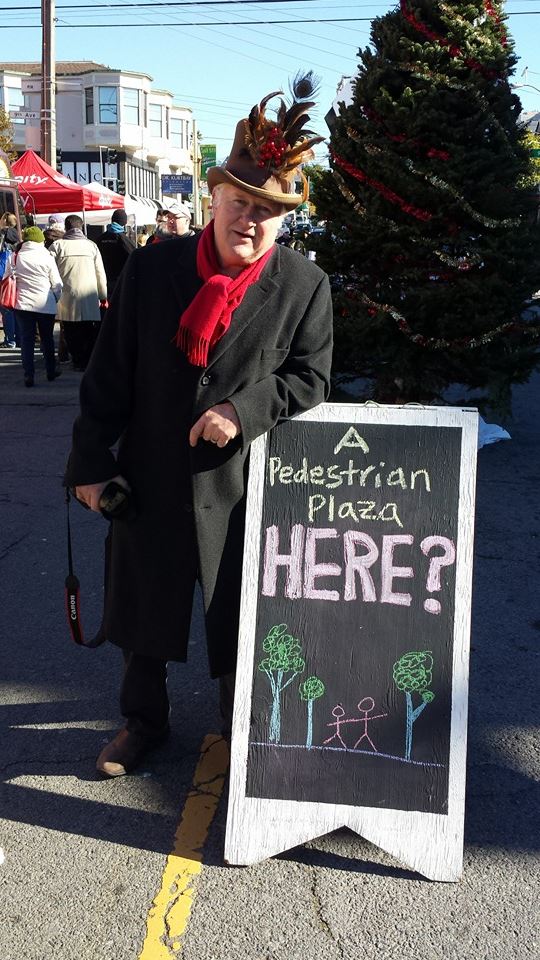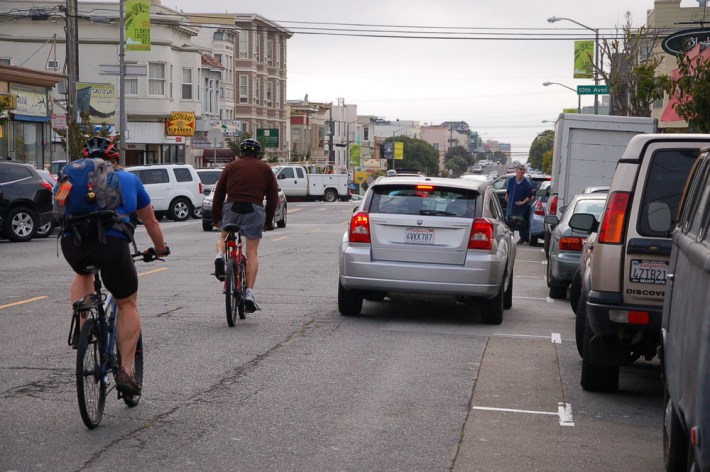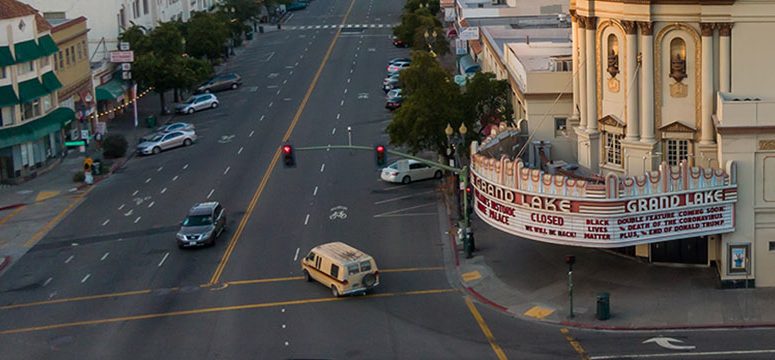
The vision for a block-long pedestrian plaza on Irving Street in the Inner Sunset is taking the next step, with the launch of a community-based study. Dubbed "Irving Commons," the plaza idea was warmly received by neighbors when it was presented two years ago at Inner Sunset Sundays, a street party organized four times per year on the block of Irving between Ninth and Tenth Avenues.

The Irving Commons Project is being led by a group of local organizers, including Adam Greenfield, an organizer of Inner Sunset Sundays and president of the Inner Sunset Park Neighbors board. He emphasized that the study is not necessarily a campaign for the plaza, but simply an examination of its potential. "We started to realize that doing the occasional street event was so limited in what we could do, so the idea started coming out: What if this were a permanent gathering space?"
Taking cues from successful plazas in SF and other cities, organizers say the location appears to meet all the right qualifications. It's right next to the bustling neighborhood hub of Ninth and Irving, where four transit lines, including the N-Judah -- Muni's busiest -- either pass through or stop nearby. But the block itself has no transit lines or garage entrances. Meanwhile, it's home to a variety of businesses and gets a lot of walking and biking traffic.
The vast majority of the block, however, is essentially a parking lot. Lincoln Way, one block over, serves as the main thruway for drivers.
"It's definitely worth a study," D5 Supervisor London Breed told Streetsblog at Inner Sunset Sundays last weekend. "I think it's a great idea, and I love the fact that they're coming together to talk about it, and they're not trying force anything down anyone's throat. They're saying, we want to see what's possible."
The plaza study is intended to flesh out traffic impacts (with help from city planners, organizers hope) and the potential benefits to nearby businesses. It will also survey how people get to the street. Surveys done on similar commercial streets like Polk, Columbus, Geary in the Richmond, and Irving west of 19th Avenue have consistently found that the proportion of people arriving without cars is roughly around 80 percent.

One successful precedent that organizers point to is in Boulder, Colorado, where the four-block Pearl Street Mall was built in 1977 "despite controversies relating to a projected lack of parking and disruption of businesses," according the Downtown Boulder website.
"There was a lot of resistance, and now it's become probably one of the greatest assets of the city," said Hillary Griffith, executive director of Boulder Green Streets, who attended Inner Sunset Sundays while in SF. "Now, people come from all over. It's the heart of the city."
In an early sign of support for the Irving Commons, organizers gathered dozens of signatures at both Inner Sunset Sundays events, where boards were laid out explaining the idea.
When I asked Breed if she thinks Irving Commons could become a neighborhood centerpiece akin to Japantown's Peace Plaza, also in District 5, she said, "Potentially, but I want to emphasize to people that we're talking about a study. It may reveal that it's not a good idea. We don't know what people feel about it. Not everyone's been able to provide input."





